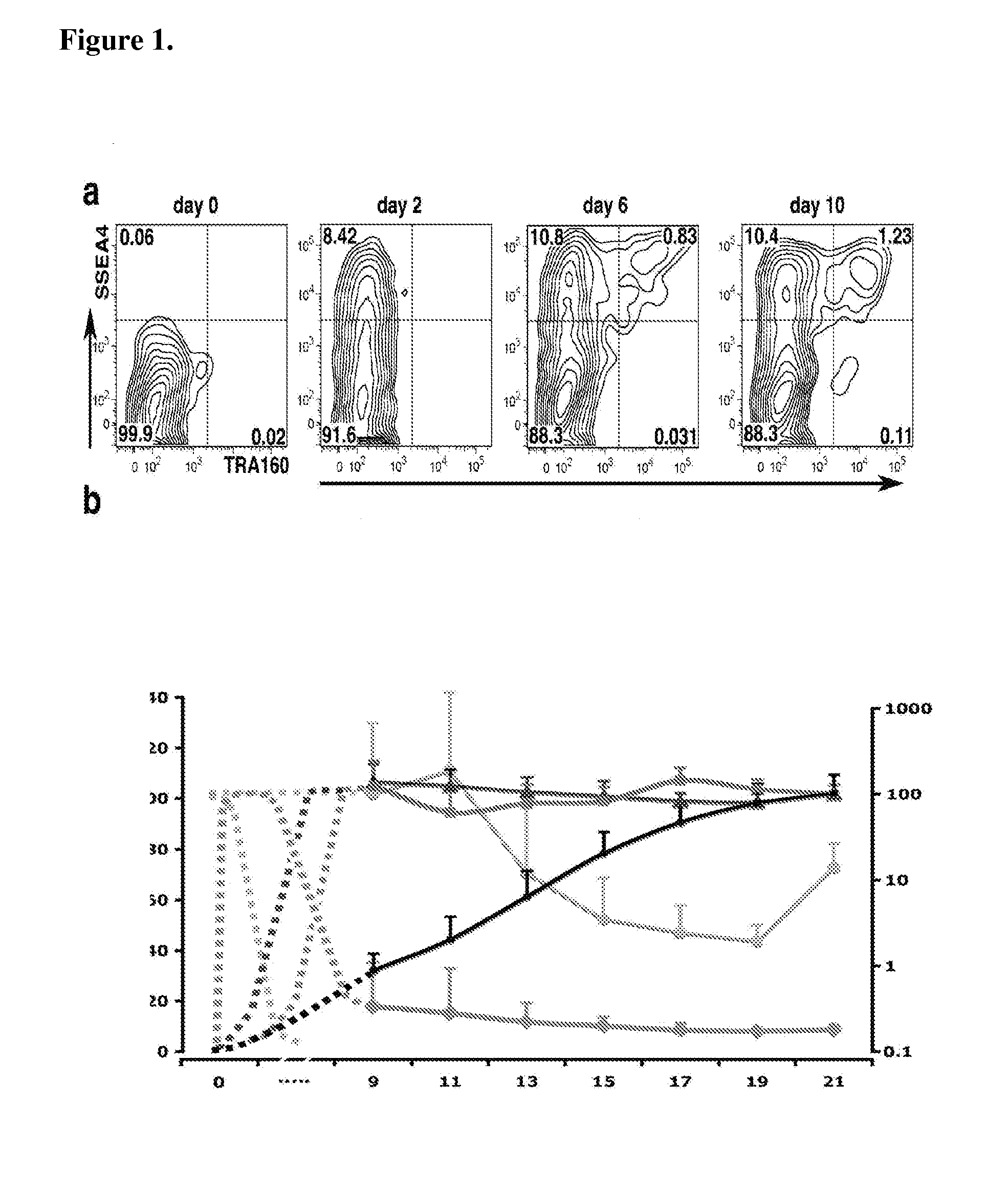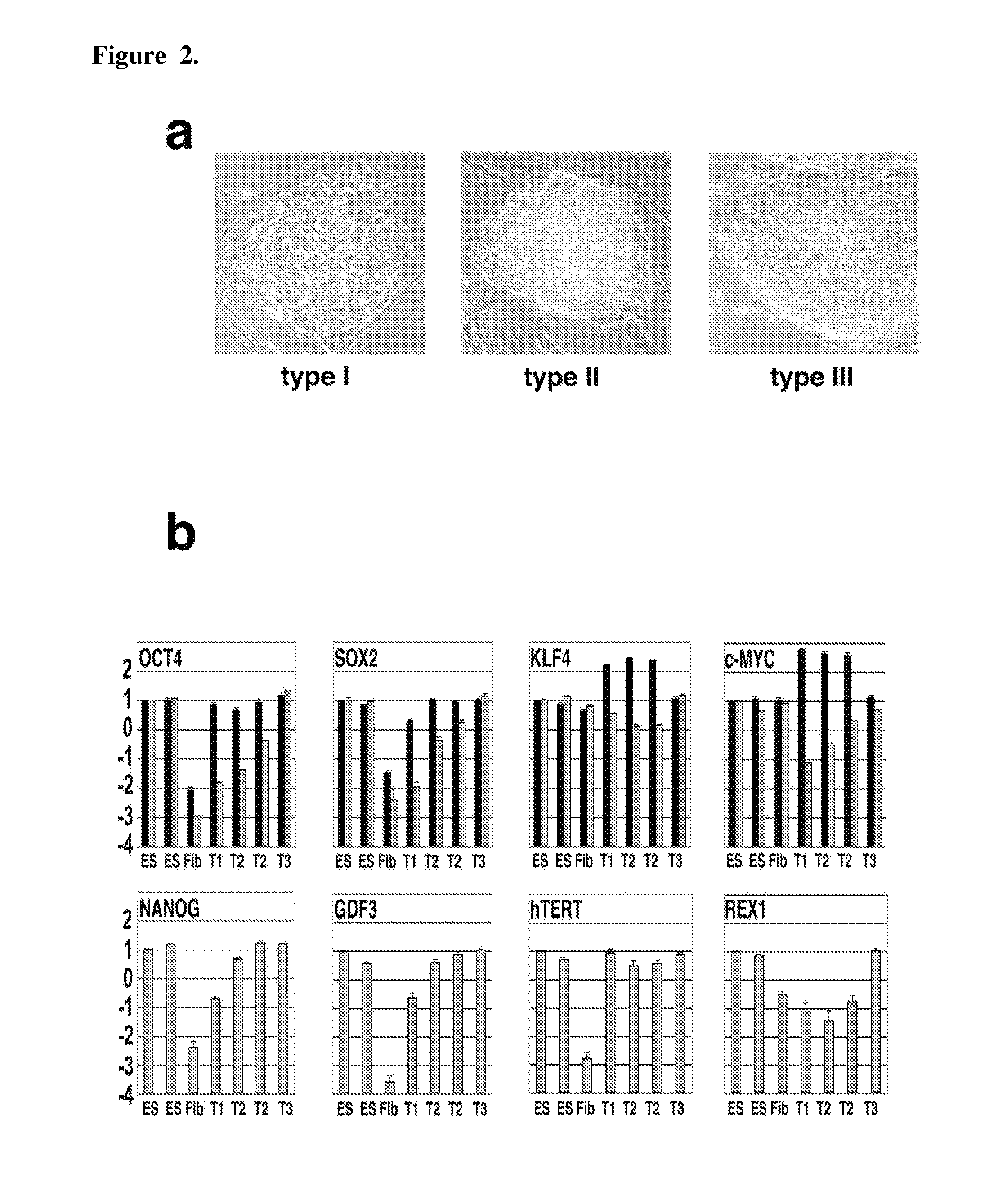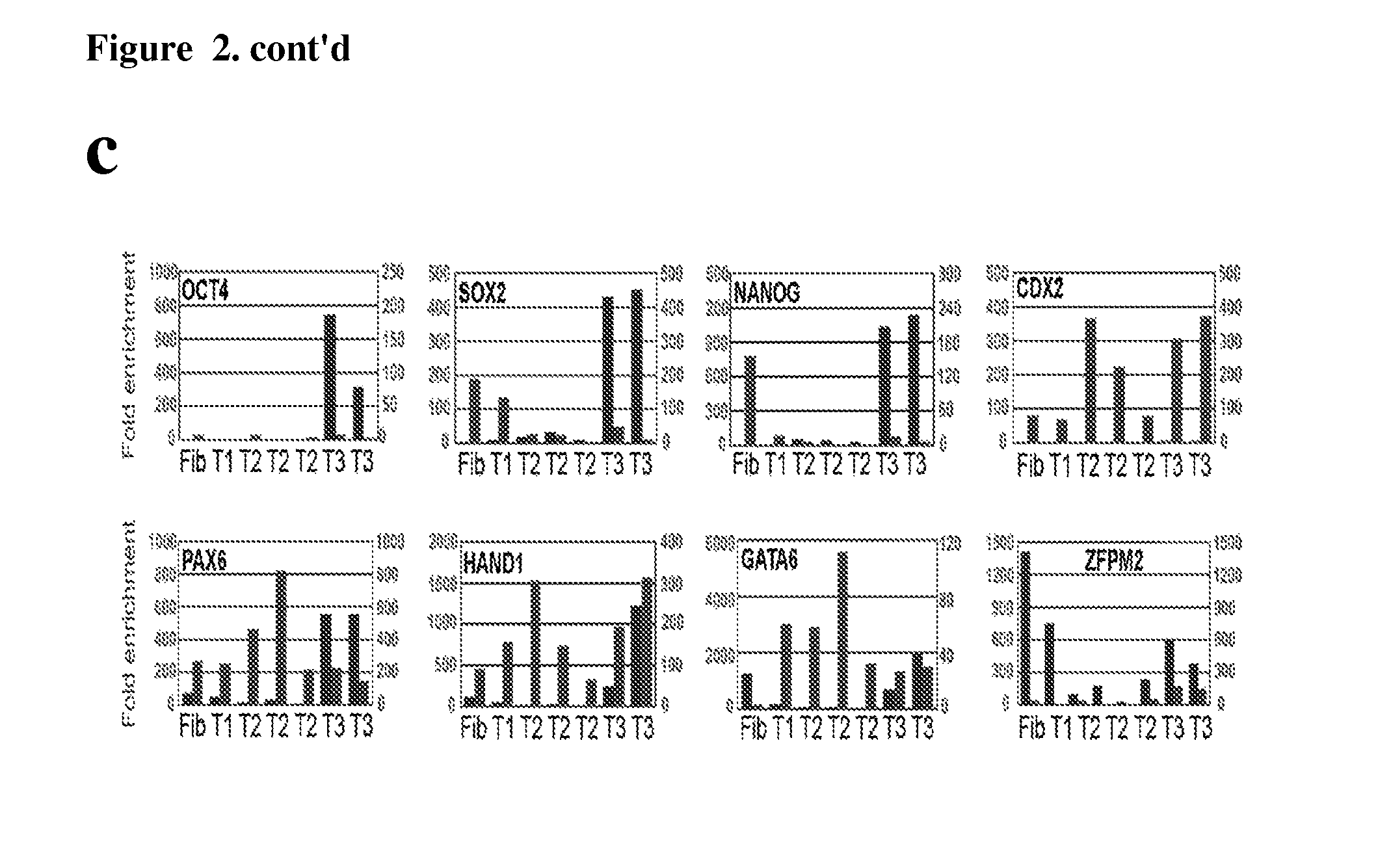Detection of human somatic cell reprogramming
a human somatic cell and reprogramming technology, applied in the field of identification of induced pluripotent stem cells, can solve the problems of imperfect reprogramming cells, hindering efforts to define molecular milestones, kinetics, and underlying mechanisms of reprogramming, and no current methods to faithfully identify nascent human ips cells amongst a large and heterogeneous population of fibroblasts. , to achieve the effect of enhancing reprogramm
- Summary
- Abstract
- Description
- Claims
- Application Information
AI Technical Summary
Benefits of technology
Problems solved by technology
Method used
Image
Examples
examples
[0095]Somatic cells can be reprogrammed into induced pluripotent stem (iPS) cells by enforced expression of transcription factors. Using serial live imaging of human fibroblast undergoing reprogramming, distinct colony types were identified that morphologically resemble embryonic stem cells yet differ in molecular phenotype and differentiation potential. By using expression of pluripotency markers, methylation at the Oct4 and Nanog promoters, and differentiation into teratomas, it was determined that only one represents true iPS cells, while the others represent reprogramming intermediates. Proviral silencing and expression of TRA-1-60, DNMT3B, and REX1, can be used to distinguish the fully reprogrammed state, whereas Alkaline Phosphatase, SSEA-4, GFD-3, NANOG, and TERT are insufficient as markers. It is also shown herein that reprogramming using chemically defined medium favors formation of fully reprogrammed relative to partially reprogrammed colonies. These data define molecular ...
PUM
| Property | Measurement | Unit |
|---|---|---|
| angle | aaaaa | aaaaa |
| area | aaaaa | aaaaa |
| time | aaaaa | aaaaa |
Abstract
Description
Claims
Application Information
 Login to View More
Login to View More - R&D
- Intellectual Property
- Life Sciences
- Materials
- Tech Scout
- Unparalleled Data Quality
- Higher Quality Content
- 60% Fewer Hallucinations
Browse by: Latest US Patents, China's latest patents, Technical Efficacy Thesaurus, Application Domain, Technology Topic, Popular Technical Reports.
© 2025 PatSnap. All rights reserved.Legal|Privacy policy|Modern Slavery Act Transparency Statement|Sitemap|About US| Contact US: help@patsnap.com



